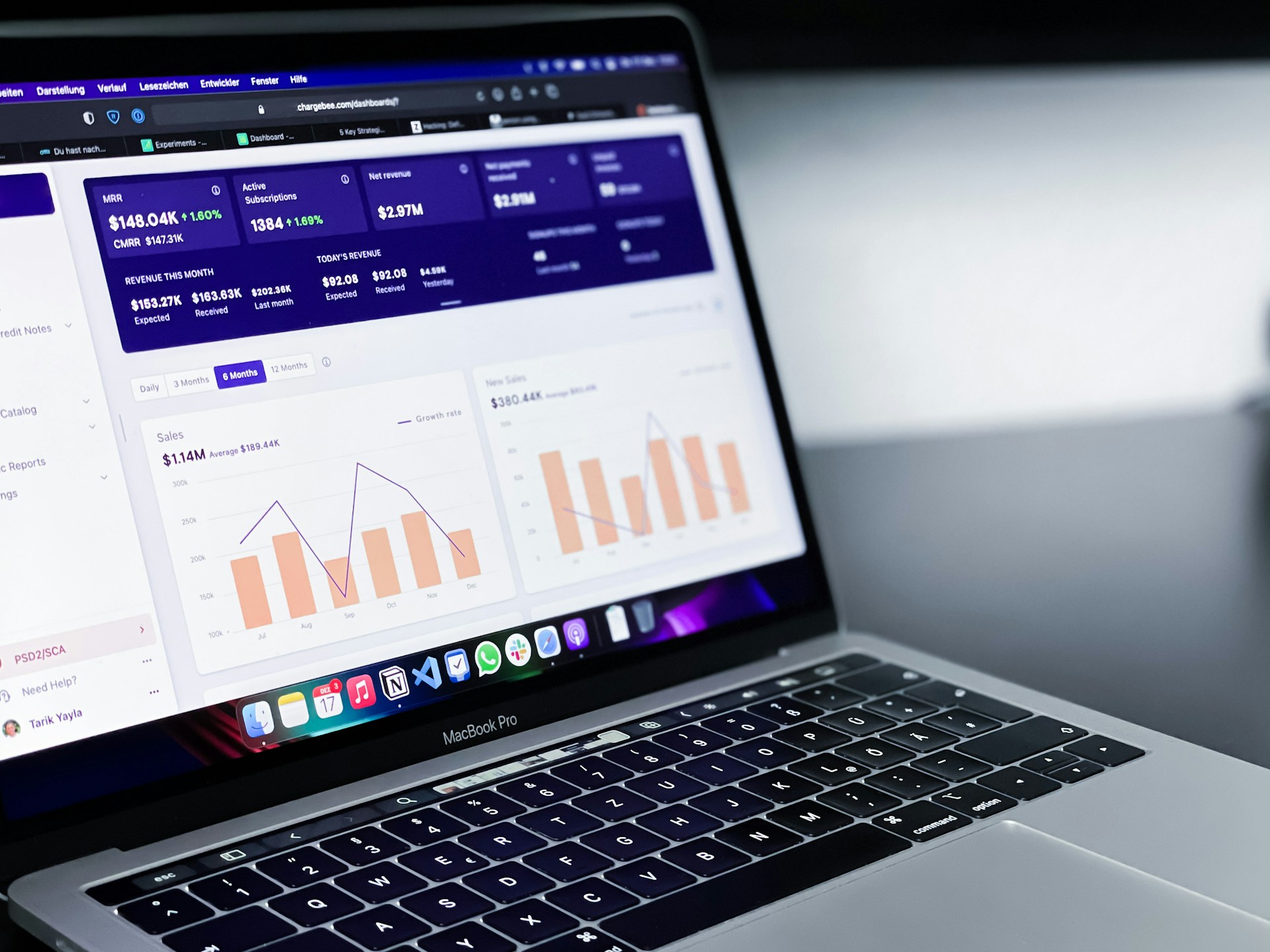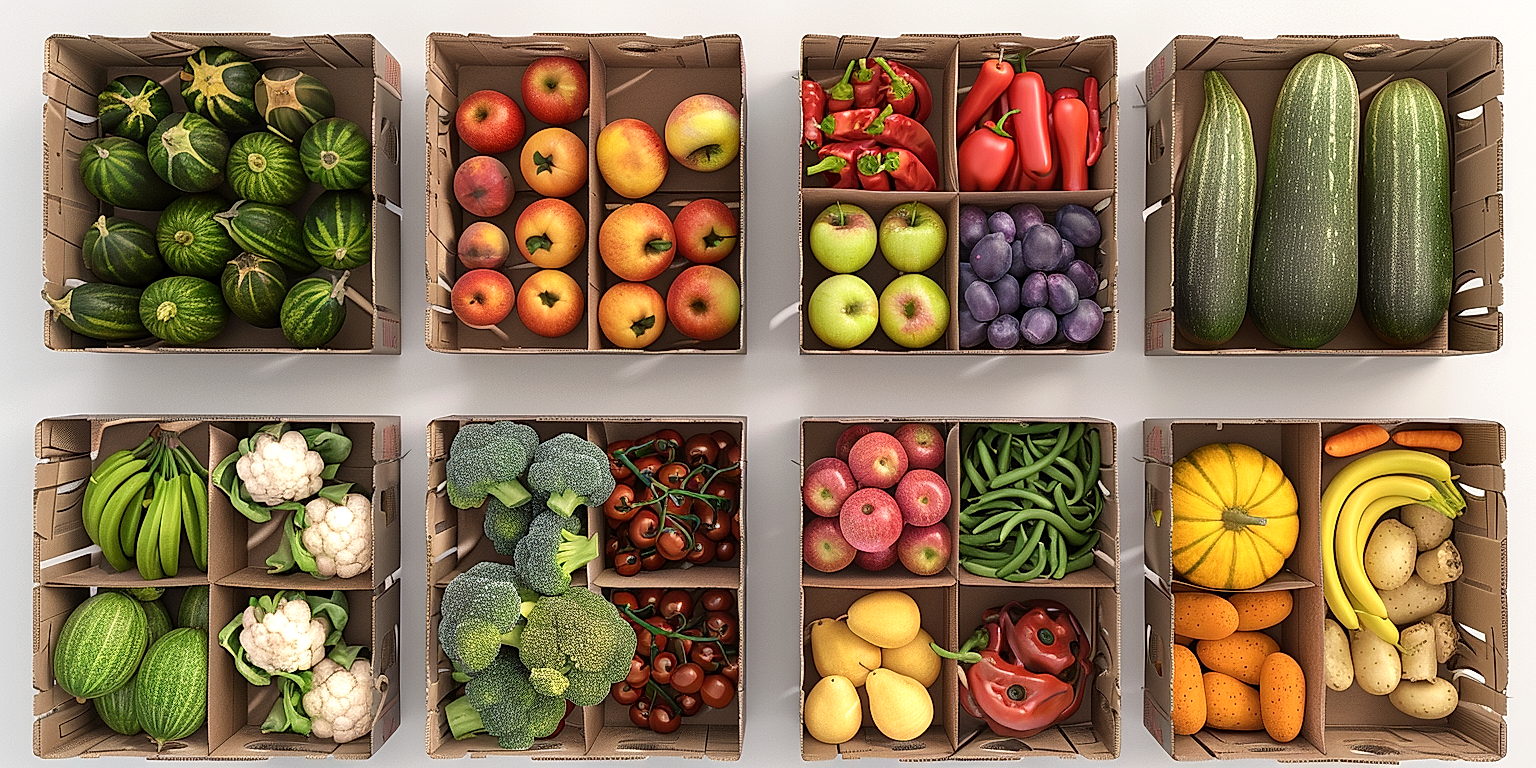In the realm of logistics and transportation, efficiency is core to successful operations.
Businesses handling perishable goods, such as produce, understand the crucial role that fleet management plays.
With the constant pressure to deliver fresh and high-quality produce, effective management strategies can greatly determine the overall performance of the business.
The challenges herein lie in streamlining operations, improving efficiency, reducing costs, and ensuring timely delivery.
A deep understanding of the industry dynamics and investment in appropriate strategies are critical for success.
This piece will dive deep into the principles of optimized fleet management in the context of produce shipping.
Contents
- Best Practices For Fleet Management In Produce Shipping
- 1. Optimize routing to minimize distance and fuel expense.
- 2. Practice regular preventative maintenance for all vehicles
- 3. Train drivers on efficient driving methods.
- 4. Use fleet management software for tracking
- 5. Maintain strict hygiene standards in vehicles.
- 6. Regularly Check Temperature Controls in Vehicles
- 7. Regularly update fleet with latest technologies
- 8. Ensure proper vehicle loading to prevent damage.
- 9. Have protocols for mishandling, loss of produce
- 10. Keep records of all vehicle and driver activity.
- The Bottom Line
Best Practices For Fleet Management In Produce Shipping
1. Optimize routing to minimize distance and fuel expense.
One of the key best practices in fleet management for produce shipping is optimizing routing to ensure minimum distance traveled and reduced fuel expenses.
This can be achieved using modern routing software that uses real-time data to consider traffic, construction, and other impediments, selecting the most efficient route.
Companies should focus on the regularity of route optimization, updating the process consistently to accommodate for changes such as new clients or road construction.
The involvement of drivers can be beneficial in this process, as they can provide insights on local traffic patterns, road conditions and other relevant factors that may impact the route selection.
Optimizing routes is not just about minimizing distance, but also about optimizing the utilization of your fleet.
In other words, route optimization also includes combining multiple deliveries on a single route whenever feasible, which further ensures fuel efficiency and cost-effectiveness.
It is crucial to use a strategic and data-driven process rather than arbitrary decision-making in optimizing routes.
Advanced technologies like Big Data and Artificial Intelligence can be deployed for predictive analyses in this regard.
This informed decision-making helps in reducing total mileage, lowering fuel usage, and streamlining operations.
A further advantage of route optimization is that it reduces the carbon footprint of the company, contributing to its corporate social responsibility goals.
It is important to carry out regular reviews and analyses of the adopted routes to identify areas of success and points that need adjustment.
Moreover, ongoing communications with drivers regarding the efficiency of routes is also essential to maintain optimal routing.
Apart from providing monetary benefits, an optimal route can also lead to improved driver satisfaction as it can help to avoid stressful driving conditions, leading to better retention rates of your drivers.
The increased efficiency realized from optimal routing can also lead to timely deliveries, thereby enhancing customer satisfaction levels.
In conclusion, optimizing routes is a best practice that can increase efficiency, reduce costs, enhance customer satisfaction, and contribute to sustainability in the long run.
2. Practice regular preventative maintenance for all vehicles
One of the best practices for fleet management in produce shipping is to perform regular preventative maintenance on all vehicles.
This maintenance can go a long way in ensuring the smooth operation of your vehicles and thus, your business.
Preventative maintenance refers to regular inspections and repairs conducted to prevent potential mechanical failures or issues.
This critical practice may include tasks such as regular oil changes, brake checks, tire rotations, and engine inspections.
By taking care of these small tasks regularly, it is possible to prevent larger, more expensive issues from arising down the line.
The efficiency and safety of the vehicle fleet are greatly increased when regular maintenance is performed.
For example, maintaining optimal tire pressure can improve fuel economy and extend the life of the tires, thereby saving money.
Furthermore, preventative maintenance can often be performed during off-peak hours, minimising vehicle downtime and maximizing operational efficiency.
It is urged that adherence to the vehicle manufacturer’s recommended service intervals is maintained.
If deviations occur, it’s possible that the vehicle’s warranty could become voided.
This could result in unbudgeted expenses if a major component fails.
The practice of preventive maintenance is not only about maintaining the vehicles in good condition, but it is also about maintaining compliance with safety standards.
Failure to stay in compliance can result in fines, legal consequences, and damage to your company’s reputation.
Some of the critical inspections to include are those related to emission controls, which are also required by law in many jurisdictions.
In addition to these, inspections for wear and tear, damage and other potential safety hazards should also be performed regularly.
It’s important to keep in mind that each vehicle is different, and therefore, the preventative maintenance strategy should be adjusted according to each vehicle’s specific needs.
Ultimately, regular preventative maintenance will ensure that your vehicles are always in the best condition possible for the transportation of produce, leading to improved customer service and trust.
3. Train drivers on efficient driving methods.
Efficient driving methods are crucial to any fleet management program, and this is especially true in produce shipping.
These techniques can significantly reduce fuel consumption, extend vehicle lifespans and improve the safety of drivers and products.
Training your drivers can start with basic driving principles such as accelerating smoothly, maintaining a steady speed, and avoiding rapid starts and stops.
Among these principles, one of the major techniques emphasized should be avoiding excessive idling, which burns fuel without generating any mileage.
Regular training sessions are needed to ensure drivers are always updated with the latest efficient driving techniques.
Such sessions can also provide a platform to reinforce the importance of these methods, their benefits, and the company’s expectations in following them.
By training drivers to be more conscious of their driving habits and how these habits affect the overall operation, the company would significantly reduce not just costs, but its environmental footprint as well.
Using technology can further complement the training of drivers.
Telematics systems provide real-time data about the vehicle’s performance and the driver’s behavior, which contributes significantly to recognizing and reinforcing efficient driving methods.
The data obtained can be utilized to provide constructive feedback to the drivers about their driving practices and areas they need to improve.
Moreover, these devices often act as an extension to training by setting off alerts when drivers engage in inefficient and unsafe behaviors such as harsh acceleration, braking, or cornering.
Incorporating these systems signifies a win for both the company and the drivers as it ensures better safety, fuel economy, and vehicle maintenance.
However, implementing efficient driving methods and training should not be done solely for economic gains.
It’s also about promoting a culture of safety and responsibility in dealing with customers’ goods – particularly when transporting perishable items such as produce.
By doing so, not only does the company gain a reputation for reliable delivery, but it also contributes positively to the overall customer experience.
Therefore, it is essential to bear in mind that successful implementation relies heavily on ensuring drivers understand the greater purpose behind these efficient methods, regarding their safety, the company’s longevity, and the customer’s satisfaction.
4. Use fleet management software for tracking
One best practice for managing a fleet in produce shipping effectively is to use fleet management software for tracking.
This software helps managers keep track of all vehicles in the fleet, ensuring timely deliveries and optimal use of resources.
With this software, businesses can monitor the real-time location, speed, and direction of each vehicle in the fleet.
Most software can also provide information on the fuel usage and efficiency of each vehicle, potentially reducing costs and lowering the fleet’s environmental impact.
Having access to this real-time data and analytics provides managers an opportunity to make informed decisions about routing, scheduling, and vehicle utilization, leading to increased efficiency and lower costs.
The use of a good fleet management system goes beyond just tracking.
It can also be used for implementing and managing fleet maintenance programs, which can help in avoiding costly downtime or unexpected breakdowns.
Besides maintenance, the software can help in managing other important tasks like regulatory compliance, driver’s safety education, and risk management.
Furthermore, with the digital recording and tracking capabilities of this software, the risk of loss or misplacement of valuable shipment data is greatly minimized.
This digital record keeping also makes data retrieval and report generation a lot more efficient and convenient as compared to traditional paper-based methods.
Given the many benefits, investing in a fleet management system can provide a considerable return on investment in the long run.
It is important to select a software that is adaptable and scalable to the evolving needs of the fleet operations.
Prior to selecting a software, it would be beneficial to conduct a needs analysis to determine which features and capabilities would be most beneficial to the company.
In conclusion, the use of fleet management software can greatly increase efficiency, reduce costs, and improve overall operations, making it a best practice for fleet management in produce shipping.
5. Maintain strict hygiene standards in vehicles.
Maintaining strict hygiene standards in fleet vehicles is a crucial part of successful produce shipping.
While many fleet managers are concerned with reducing fuel and maintenance costs, they often overlook the importance of vehicle cleanliness.
This is a significant oversight because it directly impacts the quality of the produce being transported.
A dirty vehicle can harbour harmful bacteria and cross-contaminate products, leading to potential food safety issues and financial losses.
The first step to ensuring high hygiene standards is establishing a regular cleaning schedule for all vehicles.
This includes thoroughly cleaning the interior of the truck, particularly the cargo area where the produce is stored.
Using commercial-grade cleaning products is advisable to ensure all bacteria and potential contamination sources are eliminated effectively.
Additionally, any spills or debris should be cleaned immediately to prevent the growth of harmful bacteria and mould.
It is also necessary to perform regular inspections of the vehicle interiors to identify possible sources of contamination.
Moreover, hygiene standards do not just apply to the vehicle, but also to the people operating the vehicle.
Fleet operators and drivers should be trained on proper hygienic practices, including hand hygiene and the use of personal protective equipment such as gloves and protective clothing.
This step is crucial as operators and drivers are in direct contact with the produce and therefore can significantly contribute to the overall hygiene of the shipment.
To incorporate these practices, it may be beneficial to establish clear hygiene protocols that are communicated to all fleet members.
These protocols should be enforced rigorously to ensure everyone involved in the transport process understands their role in maintaining hygiene standards.
Regular audits should also be performed to check if the hygiene standards are being met and identify areas for improvement.
In summary, maintaining vehicle hygiene is a critical aspect of produce shipping that should not be underestimated.
Through regular cleaning, inspection, and strict enforcement of hygiene protocols, fleet managers can ensure that their vehicles are not only running efficiently but are also providing a safe environment for produce transport.
6. Regularly Check Temperature Controls in Vehicles
One of the key practices in fleet management for produce shipping is to regularly check the temperature controls in the vehicles. This is critical because the condition and quality of produce transported greatly depends on the temperature maintained within the vehicle.
The transport of fresh produce has a narrow window of temperature tolerance as changes in temperature, especially when too high or too low, can significantly impact the freshness and edibility of the produce.
The optimal use of temperature control systems in vehicles results in fewer losses and wastage of fruits and vegetables, ultimately driving improved efficiency and higher profit margins for the company.
It’s also worth mentioning that temperature control doesn’t just depend on the working condition of the vehicle’s cooling system, but also on external weather conditions and the type and quantity of produce.
The maintenance of temperature controls is also closely related to the vehicle’s fuel consumption. When the temperature control system needs to work harder to maintain the needed temperature levels, it may lead to an increase in fuel use – another reason to give temperature control the attention it deserves.
It should always be remembered that different produce requires different temperature settings. Thus, fleet managers need to ensure that they know the specific temperature requirements for each type of produce they transport and adjust controls accordingly.
The complexity of maintaining a suitable temperature throughout the shipping process can be overwhelming, especially for larger fleets. However, this can be simplified by using automated temperature monitoring systems.
These systems not only allow for precise control of temperatures but also provide data-driven insights that can help improve temperature management practices. They can also alert when there’s a deviation from the required temperature range, allowing for quick corrective measures.
Temperature checks should not be a one-off activity. Rather, it should be done at regular intervals to ensure the produce is always housed at optimum conditions throughout the shipping process.
Keeping a record of these checks, noting down the temperature readings and any subsequent actions taken, can be beneficial in identifying patterns or issues in the long term.
It’s also a good practice to train drivers on the importance of temperature control, so they can take necessary actions if an issue arises during the trip. Also, drivers can play active roles in conducting these checks especially when automatic monitoring systems are not available.
At last, investing in regular maintenance and repairs of the temperature control systems of vehicles will undoubtedly pay high dividends in the long run.
In the critical singular aim of keeping the produce fresh, businesses should necessitate the importance of regular and thorough temperature checks in their fleet management practices.
7. Regularly update fleet with latest technologies
Investing in the latest technologies for a fleet is crucial in maintaining efficiency and staying competitive in the produce shipping industry. Modern technologies can offer a wide range of benefits that can enhance both the productivity and profitability of your fleet.
For instance, advanced telematics can help monitor vehicle performance, fuel consumption, and driver behavior, enabling fleet managers to make data-driven decisions.
Innovations in technology are constantly revolutionizing the fleet management industry, providing new opportunities for increased efficiency and safety.
Adopting GPS tracking devices not only keeps you connected with your fleet in real-time but also allows for better route planning and timely deliveries.
Technological solutions such as automatic onboard recording devices (AOBRD) and electronic logging devices (ELD) can ensure regulation compliance. They can help maintain an accurate record of hours of service (HOS) and prevent driver fatigue, which is a significant concern in the transport industry.
Technology can also assist in maintaining the quality of the produce during transportation. For instance, using smart temperature monitoring systems and IoT solutions can help maintain optimal temperature and humidity conditions within the vehicles.
With the advent of autonomous vehicles, incorporating such cutting-edge technology could drastically reduce labour costs and increase overall operational efficiency in the near future. Keeping an eye on these advancements and incorporating them into your fleet when it becomes feasible will be invaluable.
Good fleet management also means evaluating technology offerings regularly, as the landscape is always changing.
Each fleet will have its own unique needs and challenges so it is important to thoroughly research the various technologies available and choose those that offer the best fit.
Commercial vehicle technologies are evolving at a rapid pace, so staying updated with the latest offerings could be a game changer for your business.
Many service providers offer flexible and scalable solutions that can grow with your fleet, so your investment can reap long-term benefits.
Embracing technology means equipping your drivers with improved tools as well. Continual training should be provided so that they can effectively utilize the technology at their disposal.
While the initial investment may seem high, the long-term benefits and savings often outweigh the costs.
While these new technologies often require an upfront investment, predominantly, they result in substantial long-term savings. With advancements in technology, this trend is likely to continue and greatly benefit the fleet management industry.
8. Ensure proper vehicle loading to prevent damage.
When managing a produce shipping fleet, one of the key responsibilities involves overseeing the loading and unloading process to avoid any damage to the produce.
Proper careless loading and unloading can damage the produce, leading to significant losses, and can affect the durability and performance of the vehicles.
Implementing standards for vehicle loading must be among the top priorities for fleet managers.
The loading process needs to be consistent, efficient, and safe for the workers in order to prevent stalling operations and additional financial burden.
The effectiveness of the vehicle’s cooling system can also be impacted by the loading method, leading to poor temperature control damaging the quality of the produce.
An overpacked vehicle can cause harm not only to the vehicle’s structure but can also lead to produce being crushed or damaged during transport.
Produce must be loaded in a manner that evenly distributes the weight.
Overloading a vehicle on one side may strain the suspension and tires, leading to vehicle damage and unsafe driving conditions.
On the other hand, underloading or using a large vehicle to transport a small amount of produce may result in the produce shifting or toppling, leading to damage.
The record-keeping is vital when it comes to the loading and offloading process.
The records, when maintained properly, can provide a detailed look into the shipping operations, helping to identify areas of improvement.
Companies can ensure loading safety by providing workers with necessary safety equipment such as gloves, masks, and safety shoes.
Besides, educating the workers regarding how different produce should be boxed and even how those boxes should be placed on a pallet can help maintain the integrity of the fruits and vegetables.
Further, specific procedures must be outlined and followed in case of accidents or product damage during load or transit.
In essence, the habits adopted for the loading and unloading of produce can significantly affect the product quality, customer satisfaction, and the company’s bottom line.
9. Have protocols for mishandling, loss of produce
A key aspect of fleet management in produce shipping is to implement adequate protocols for any mishandling or loss of produce.
This not only ensures the safety and quality of the produce but also avoids unnecessary costs.
These protocols should clearly define procedures to deal with different situations that may arise during transport.
For instance, if a truck is involved in an accident, the protocol should specify how the produce will be handled or salvaged, if possible.
Alternatively, if the produce gets spoiled due to malfunctioning temperature controls, there should be a procedures detailing actions to take to minimise further loss.
This usually involves timely notification of relevant parties, including management, customer or insurance provider.
Having a protocol in place will ensure everyone knows their responsibilities and actions to take in case of mishandling or loss.
These procedures should be clearly communicated and frequently reemphasized within the team.
Regular training is also important to ensure team members are fully aware of these protocols.
Each individual in the company, from the management to the drivers, should understand the significance of adhering to these protocols.
Remember that these procedures are not meant to be static; they need to be regularly reviewed and updated where necessary.
This could be based on feedback from employees, experiences during their implementation, or changes in regulations or industry practices.
Similarly, efforts should be made to ensure any improvements or changes are quickly communicated back to all relevant team members.
Finally, it’s worth noting that while having these protocols is crucial, they are useless unless they are consistently implemented.
Therefore, management should place a high emphasis on adherence to these protocols, rewarding compliance and correcting deviations.
Dealing with mishandling and loss of produce can be challenging but with comprehensive and clear protocols, potential damage can be limited and the quality of the produce can be safeguarded.
10. Keep records of all vehicle and driver activity.
Keeping diligent records of all vehicle and driver activity is not just a recommended best practice, it’s a vital aspect of effective fleet management for produce shipping.
With accurate record-keeping, fleet managers can track each vehicle’s performance and detect any potential issues or lapses in efficiency.
Records allow managers to monitor driver and vehicle productivity, adherence to designated routes, timeliness of deliveries, and fuel efficiency.
Furthermore, these records may provide valuable information that can be used to inform future decisions about fleet management practices.
The ability to access and analyze these records, in real time or retrospectively, can be instrumental in optimizing fleet operations and improving overall productivity.
Recordkeeping can also contribute to the company’s legal compliance as carriers in most jurisdictions require comprehensive records of driver activities including driving hours, rest periods, and vehicle maintenance activities.
From a safety perspective, a record of vehicle usage can be a valuable tool in assessing the condition of the fleet and identifying any vehicles that may require maintenance or servicing.
Moreover, in the unfortunate event of accidents or other incidents on the road, these records can provide crucial evidence that can help to protect the company and potentially resolve disputes.
If things do go astray, having immediate access to comprehensive records allows fleet managers to trace back the origins of the issue and implement preventative measures for the future.
Furthermore, records can reveal patterns over time, enabling management to identify potential efficiencies or areas where further training or changes in practice may be required.
A commitment to keeping comprehensive records also sends a clear message to drivers about the company’s dedication to professionalism and high standards, which can, in turn, encourage drivers to maintain similar levels of commitment in their own work.
Remember, keeping records is ineffective if they aren’t utilized appropriately – the data they contain is an invaluable resource for tracking trends, identifying issues, and strategizing for future fleet management.
The upshot is that recordkeeping in fleet management isn’t simply about keeping track of what you have and what’s happening; it’s a central component of a proactive, strategic approach to fleet management.
In the end, the benefits of rigorous recordkeeping extend well beyond the basic logistics of fleet operations, driving overall improvements in productivity, efficiency, and quality of service in the arena of produce shipping.
The Bottom Line
Optimizing routes, ensuring regular maintenance, employing efficient driving techniques, and utilizing fleet management software are all essential strategies for improving efficiency, reducing costs, and maintaining quality within any fleet.
Maintaining high hygiene and temperature control standards are crucial for guaranteeing product quality and customer satisfaction.
Also, staying up-to-date with the latest technologies can provide competitive advantages while proper loading protocols can prevent product damage.
Having clear procedures for any mishandling or loss is key to handling such situations efficiently.
Finally, comprehensive record-keeping helps to track progress, identify areas for improvement, and maintain accountability.
By integrating these practices, enterprises stand to optimize their fleet operations significantly and thereby enhance their overall business performance.




